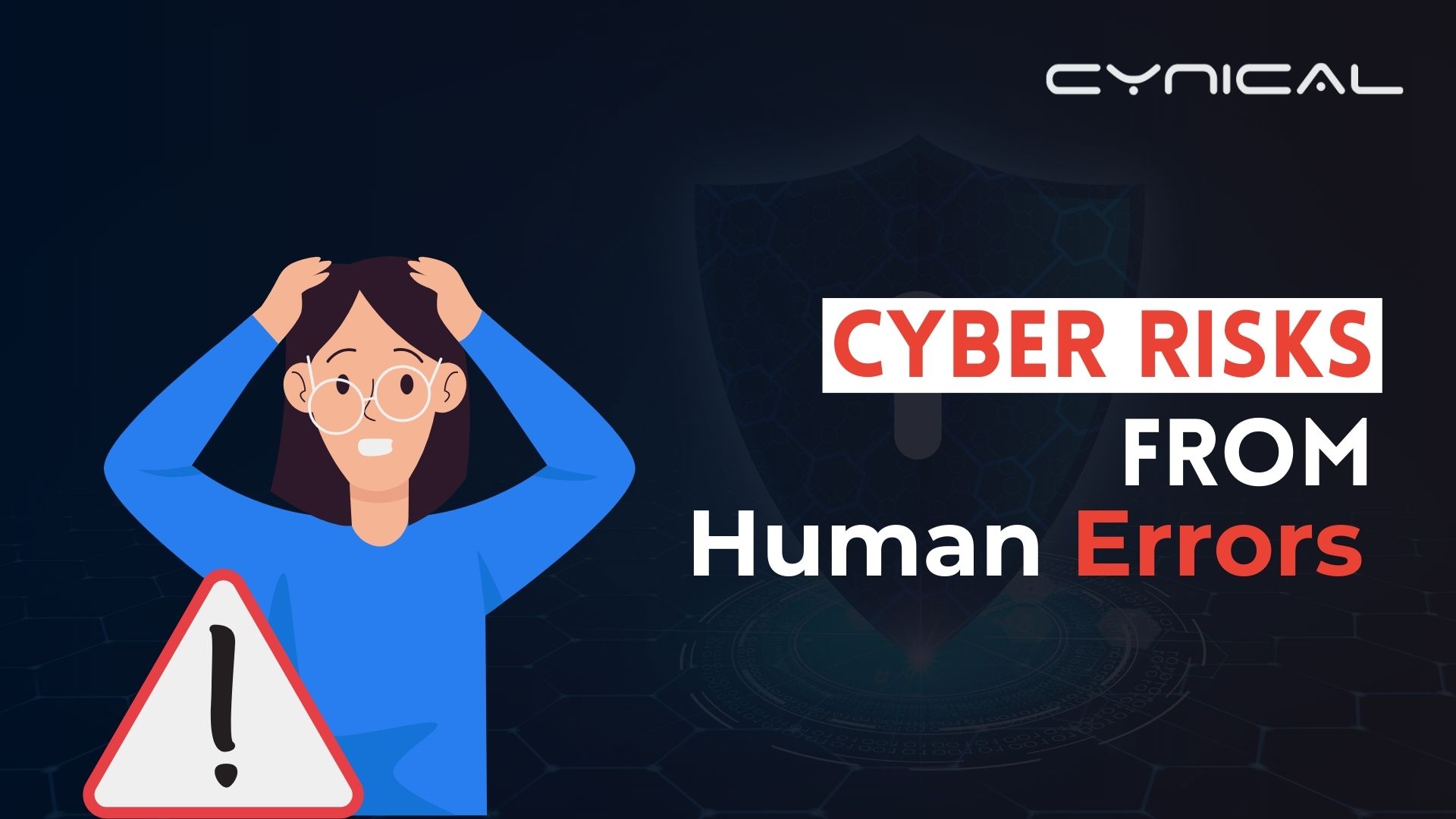- January 2, 2025
- Posted by: Bikash Sharma
- Category: Uncategorized

Top Cybersecurity Threats Related to Human Risk: How to Protect Your Organization
In today’s rapidly evolving digital landscape, cybersecurity threats continue to pose significant risks to organizations across all industries. A critical factor driving these vulnerabilities is human behavior. Despite advances in technology and security infrastructure, human error remains the most significant cause of security breaches.
According to a study by IBM, human error is responsible for 95% of cybersecurity breaches. This statistic highlights the pressing need for organizations to address human risk through effective cybersecurity training, awareness campaigns, and robust security protocols.
Understanding the Top 9 Cybersecurity Threats Stemming from Human Risk
- Phishing Attacks Phishing remains one of the most common attack vectors. Cybercriminals use deceptive emails, text messages, or social media posts to lure victims into revealing sensitive information, such as login credentials or financial details. Often, these attacks lead to malware infections or ransomware attacks, causing significant financial and reputational damage. A well-implemented Phishing Simulation program can help organizations prepare their workforce to recognize and respond to phishing attempts effectively.
- Weak Passwords Weak passwords are often the first line of defense breached by cybercriminals. Passwords based on easily guessable personal information or simple patterns are highly vulnerable to brute-force attacks. Organizations should encourage the use of strong, unique passwords combined with multi-factor authentication (MFA) to mitigate this risk.
- Social Engineering Social engineering exploits human psychology to manipulate individuals into divulging confidential information or performing actions that compromise security. Attackers may impersonate trusted figures or create a false sense of urgency, prompting employees to act without thinking. Awareness training can help staff recognize the signs of social engineering attacks and respond accordingly.
- Lack of Security Training The lack of cybersecurity training is a critical vulnerability. Without the knowledge of best practices and awareness of current threats, employees are more likely to fall prey to cybercriminals. Regular, comprehensive Security Awareness Training tailored to the specific roles and needs of different departments ensures that all staff members are equipped with the skills to recognize threats and mitigate risks.
- Inadequate Software Updates Outdated software is a significant vulnerability, as it often contains unpatched security flaws that cybercriminals can exploit. Regular updates are essential to ensuring systems remain secure. Establishing a proactive patch management strategy can significantly reduce the risk of exploitation through outdated software.
- Use of Unsecured Networks Public or unsecured Wi-Fi networks provide an opportunity for cybercriminals to intercept sensitive data. Employees working remotely or in public spaces should be trained on how to use Virtual Private Networks (VPNs) to secure their online communications and prevent data breaches.
- Sharing Sensitive Information on Social Media Social media platforms are a goldmine for cybercriminals looking to gather personal information for identity theft, spear-phishing attacks, or social engineering scams. Employees should be educated on the risks of oversharing personal details on social media, especially those related to their professional roles or organizational operations.
- Physical Security Breaches Cybersecurity is not limited to digital threats. Physical security breaches, such as unauthorized access to office spaces, theft of devices, or lost data storage, can have devastating consequences. Organizations should implement strict access control policies and enforce device security protocols to protect sensitive information.
- Poor Data Management Practices Inadequate data management practices, such as not properly securing or backing up sensitive information, can lead to data breaches or loss. Effective Data Privacy Management and adherence to industry regulations such as GDPR can help safeguard valuable data and mitigate the risks associated with poor data management.
How to Mitigate Human-Related Cybersecurity Risks
To build a more resilient organization, businesses must address the human element of cybersecurity through comprehensive training, awareness, and actionable policies. Here are key strategies:
- Implement Security Awareness Programs
Regular, interactive Security Awareness Training sessions tailored to various roles within the organization can help employees understand the latest threats and best practices. By using a range of tools, from eLearning modules to phishing simulations, organizations can keep employees engaged while reinforcing critical security concepts. - Foster a Security-Conscious Culture
Cultivating a security-aware culture starts with leadership and flows down to all levels of the organization. When employees understand the importance of cybersecurity and feel personally responsible for the company’s safety, they are more likely to follow protocols and report suspicious activities. - Enforce Strong Authentication Protocols
The use of strong passwords, combined with multi-factor authentication (MFA), adds an extra layer of protection against unauthorized access. Encouraging employees to avoid reusing passwords and adopting a password manager can significantly enhance an organization’s overall security posture. - Regular Security Audits and Assessments
Conducting regular security audits, penetration testing, and Vulnerability Assessment and Penetration Testing (VAPT) ensures that potential threats are identified and mitigated before they can be exploited by cybercriminals. - Develop Incident Response Plans
Preparing for the worst is essential. An effective Incident Management Solution ensures that when a breach does occur, the organization can respond swiftly, minimize damage, and recover effectively. Clear protocols should be in place to guide employees on how to report incidents and how to handle sensitive information in the event of a breach.
Conclusion: Addressing the Human Element of Cybersecurity
Human risk remains one of the most critical challenges in cybersecurity. By acknowledging the various threats associated with human behavior and implementing robust cybersecurity training and policies, organizations can significantly reduce their vulnerability. Through consistent education, awareness campaigns, and secure practices, businesses can ensure that their workforce is a strong first line of defense against cyber threats.
At Cynical Technology, we are committed to helping organizations navigate the complex world of cybersecurity. Our comprehensive Cybersecurity Solutions empower businesses to safeguard their digital assets and protect their reputation from the ever-growing range of cyber threats.
Take action today—implement robust security measures and educate your team on how to recognize and mitigate human-related cyber risks. Reach out to us for a tailored cybersecurity awareness solution that fits your organization’s unique needs.
